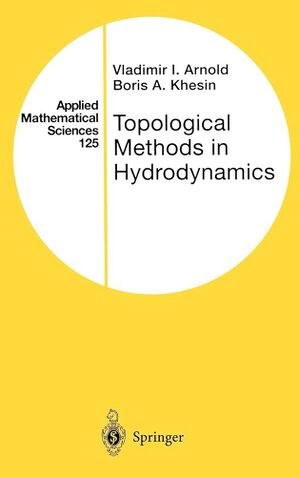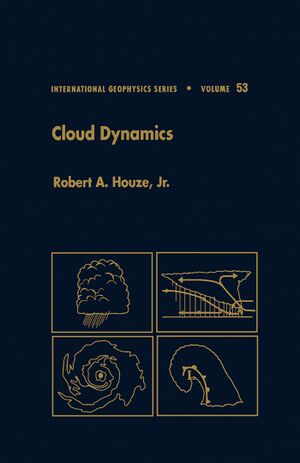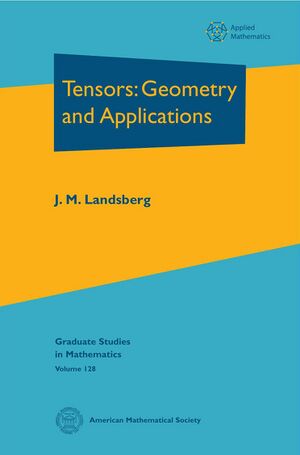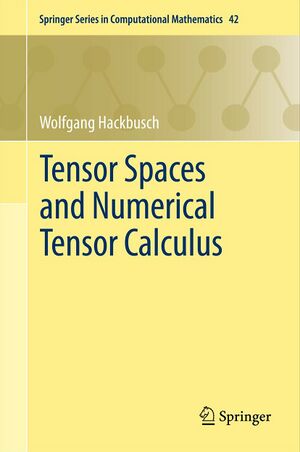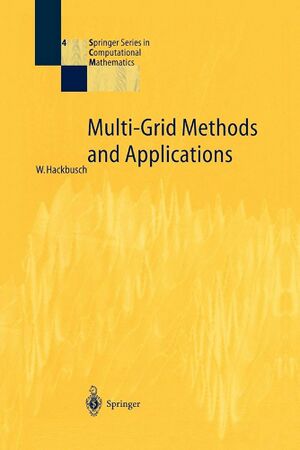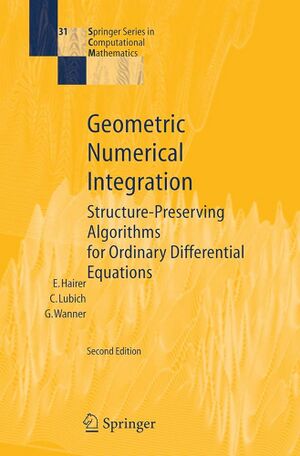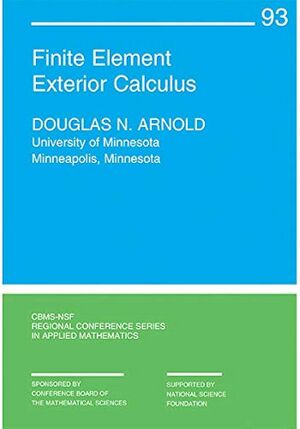Fluid Mechanics (Book): Difference between revisions
mNo edit summary |
m (→Applications) Tag: Reverted |
||
| Line 75: | Line 75: | ||
| title = === Geometric Numerical Integration === | | title = === Geometric Numerical Integration === | ||
| desc = Geometric Numerical Integration by Ernst Hairer, Christian Lubich, Gerhard Wanner. | | desc = Geometric Numerical Integration by Ernst Hairer, Christian Lubich, Gerhard Wanner. | ||
}} | |||
{{BookListing | |||
| cover = Arnold finite exterior cover.jpg | |||
| link = Finite Element Exterior Calculus (Book) | |||
| title = === Finite Element Exterior Calculus === | |||
| desc = Finite Element Exterior Calculus by Douglas Arnold. | |||
}} | }} | ||
</div> | </div> | ||
Revision as of 19:46, 13 November 2023
| Fluid Mechanics | |

| |
| Information | |
|---|---|
| Author | Lev Landau |
| Language | English |
| Series | Course of Theoretical Physics |
| Publisher | Pergamon |
| Publication Date | 1987 |
| Pages | 560 |
| ISBN-13 | 978-0-08-033933-7 |
Continuum mechanics and fluid mechanics in particular are unusual as branches of mechanics. It has the most apparent relevance to geometry yet its development in this aspect is not as popular, and theory initially lagged behind the basic physical features - there was no account for drag. This was corrected towards the end of the 19th century, as physics developed overall and computational techniques coming directly from theory began (and still do) dominate. Landau's text thus produces the up-to-date theoretical ideas of fluid mechanics. Most recently, Vladimir Arnol'd helped to show topological aspects of fluid mechanics: ideal fluid flows are geodesics in the infinite dimensional diffeomorphism group (such Lie groups also appear in QFT and CFT). The difficulties in describing turbulence persist, and it remains a testament to the difficulty of describing dynamics at multiple interacting scales. The Reynolds number expresses the scale invariance of specific phenomena, and is the entry point to the study of turbulent flows. In the simplest case, this number is calculated as the ratio uL/𝜈 where u is the velocity of the flow, L is the length of an immersed object, 𝜈 is the viscosity. Zero viscosity corresponds of the limit of the Navier Stokes equations to the Euler equations as studied in Arnol'd's book. Realistic fluids have some viscosity however small, and this is accounted for in the layer of fluid flow near the immersed object where the gradient of the velocity is large (friction takes over near the object). This theory, known as Boundary Layer Theory, was developed by Prandtl. A typical example would be air, which is very inviscid and corresponds to high Reynolds numbers especially in higher speed flows associated with aeronautics.
Because of the prevalence of computational methods, fluid mechanics is also a great entry point to the general study of numerical computing. We take this opportunity to introduce fluid mechanics and numerical ideas simultaneously while still provoking the geometric themes from earlier in our resources. Pope's text on turbulent flows indicates the three basic methods of simulation in fluid mechanics: DNS (Direct Numerical Simulation), LES (Large Eddy Simulation), and RANS (Reynolds-Averaged-Navier-Stokes) and equally importantly the statistical interpretation of turbulence. While we expect turbulence to be technically deterministic, due to the very fine detail we may treat it like noise and calculate the frequencies involved (power spectrum) which as it sounds is the Fourier decomposition used in electromagnetism and quantum mechanics. For LES, it makes simulation easier than DNS by being able to ignore the high frequency/small spatial detail part of the spectrum and still captures the coarser features of the flow. Aside from mathematics or numerical methods, some important applications of fluid mechanics are also provided - cloud physics, plasma. Our guide to numerical thinking should also be sufficient to implement these applications. Maybe you will help predict the weather or even control it, not to mention applications to nuclear fusion! Plasma applications are largely fluid-mechanical, but will be contained under Landau 10 as that is where Landau's work on plasmas is discussed.
While more complex methods like mesh or multi/adaptive-grid can be used to approximately solve these PDEs, it is instructive to learn about DNS on a lattice - the step size needed to capture the features of the flow accurately can be determined algebraically from the Reynolds number. Inspecting the process of numerically solving PDEs on a lattice, one finds that the problem resolves (in the implicit step case) to solving linear systems - this is typically why linear algebra is introduced in an engineering context. This gets to the essential mathematical features of numerical methods. Some introductory course notes on numerical analysis by Olver are here, and a related book of his here. Solving linear systems efficiently means, for instance, looking for efficient ways to multiply matrices (e.g. Strassen's algorithm) and to interpolate data. At an even lower level one studied stability of numerical methods or even the implementation of arithmetic on computers in general. Hoping to capture the basics needed and some of the cutting edge here, Landsberg's book explains how one can think of the matrix multiplication function as a tensor itself, and do algebraic geometry in the space of tensors to better understand the complexity of the algorithms involved and to find efficient solutions. A later related book of his on tensor geometry that mentions Hackbusch's motivation is grouped with condensed matter physics. Hackbusch's books work from a similar ground of tensor geometry but focuses on the numerical PDE application. His later books develop the cutting edge of the aforementioned multigrid methods. And since interpolation/galerkin/finite element methods involve inherently functional-analytical ideas, quantum mechanics background helps in thinking about the function spaces involved but is not strictly necessary.
Numerical methods are still young, Monte Carlo was developed during the Manhattan Project, and software tools stick to rudimentary approaches to rely on high performance computing. Without overwhelming this page with general aspects of numerical algorithms, we will present foundations and other interesting applications here. As with our previous philosophy, the future is in geometric physics - numerical methods which preserve differential-geometric structures. Starting from the previous numerical and specifically finite-element-mesh ideas, we present some resources for the very active area of differential-form-based interpolation and symplectic integration methods. Their importance cannot be understated, the implementation of conservation laws at the numerical level makes numerical methods not only produce apparently more physically accurate results, but also be more useful theoretically in the description of physics.
Applications
Topological Methods in Hydrodynamics
Topological Methods in Hydrodynamics by Vladimir Arnol'd and Boris Khesin.
Large-Eddy Simulations of Turbulence
Large-Eddy Simulations of Turbulence by Marcel Lesieur, Olivier Métais, and Pierre Comte.
Tensor Spaces and Numerical Tensor Calculus
Tensor Spaces and Numerical Tensor Calculus by Wolfgang Hackbusch.
Applications of Lie Groups to Difference Equations
Applications of Lie Groups to Difference Equations by Vladimir Dorodnitsyn.
Geometric Numerical Integration
Geometric Numerical Integration by Ernst Hairer, Christian Lubich, Gerhard Wanner.

